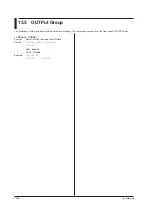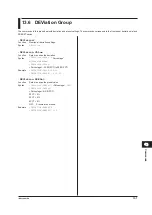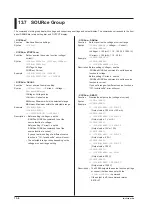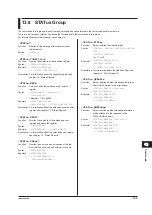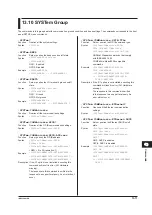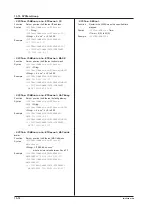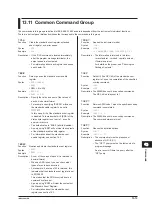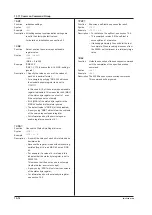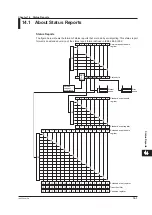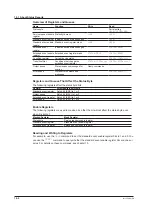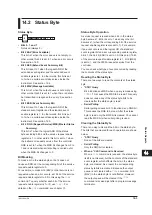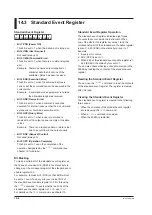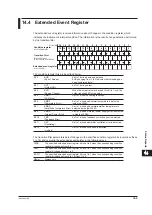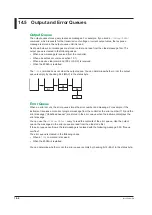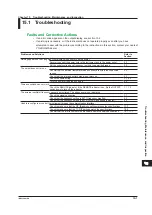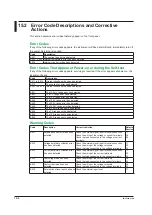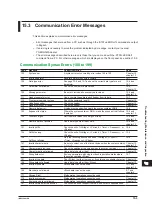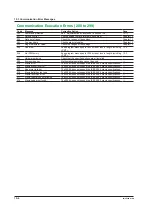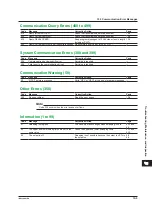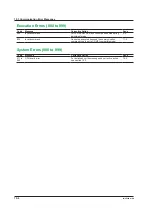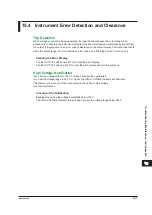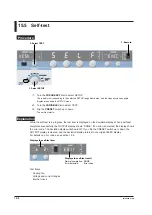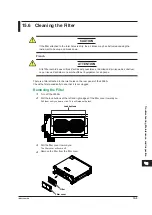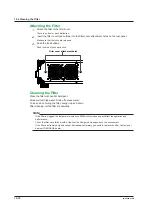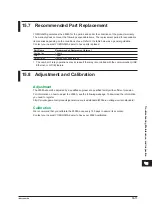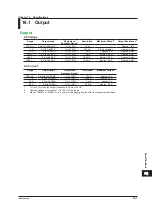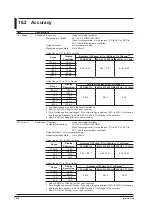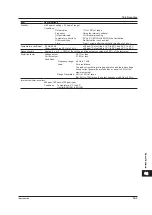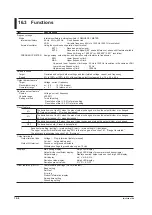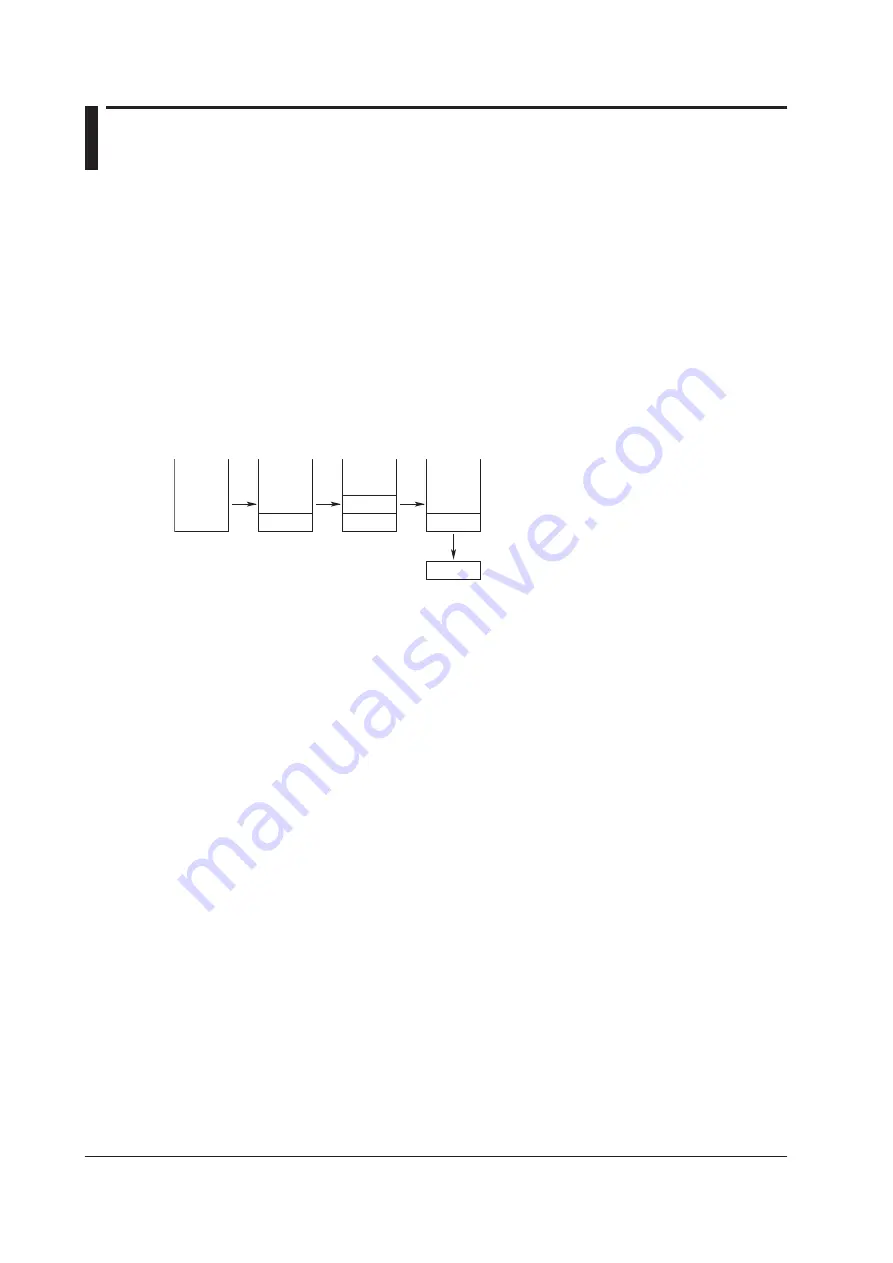
14-6
IM 2558A-01EN
14.5 Output and Error Queues
Output Queue
The output queue stores query response messages. For example, if you send a
:SOURce:READ?
command, which requests for the transmission of voltage or current output value, the response
message is stored in the output queue until it is read.
As shown below, error messages are stored in order and read from the oldest message first. The
output queue is cleared in the following cases.
• When a new message is received from the controller.
• When a deadlock occurs (see section 12.1).
• When a device clear command (DCL or SDC) is received.
• When the 2558A is restarted.
The
*CLS
command does not clear the output queue. You can determine whether or not the output
queue is empty by checking bit 4 (MAV) in the status byte.
D1
D2
D1
D2
D1
Error Queue
When an error occurs, the error queue stores the error number and message. For example, if the
instrument receives an incorrect program message from the controller, the error number (113) and the
error message (“Undefined header”) are stored in the error queue when the instrument displays the
error message.
You can use the
:STATus:ERRor?
query to read the contents of the error queue. Like the output
queue, the messages in the error queue are read from the oldest one first.
If the error queue overflows, the last message is replaced with the following message: 350, “Queue
overflow”
The error queue is cleared in the following cases.
• When a
*CLS
command is received.
• When the 2558A is restarted.
You can determine whether or not the error queue is empty by checking bit 2 (EAV) in the status byte.

